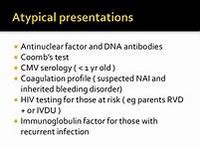
EYE PROBLEMS
FOODS THAT HARM
FOODS THAT HEAL
WHO’S AFFECTED
While it may seem like deteriorating vision is an inevitable part of aging, eating an antioxidant-rich diet can prevent or combat many eye problems
Age-related macular degeneration (ARMD) is one of the most common causes of blindness in seniors
It entails a gradual, painless deterioration of the macula, the tissue in the central portion of the retina
The first symptom is usually blurring of central vision but eventually side vision can also become limited
Cataracts develop when the lens, the transparent membrane that allows light to enter the eye, yellows
This hinders the passage of light rays, making your vision hazy, cloudy, or blurry
It’s like looking through a frosty or fogged-up window
Cataracts can develop in one or both eyes, and most are the result of getting older
During middle age, however, cataracts are often small and don’t impair vision
As they grow, your ability to see things clearly diminishes and reading and driving, especially at night, become more difficult
If untreated, the lens may become completely opaque, resulting in blindness
QUICK TIP:
Start your day with fruit Whether your breakfast staple is eggs, cereal, or pancakes, add a vision-saving burst of antioxidants to your morning meal with a glass of orange or tomato juice, grapefruit, kiwi, strawberries, or cantaloupeNutrition Connection
Choose antioxidant-rich vegetables and fruitsWhile carrots are good for your eyes, you’ll get more peeper-protecting antioxidant vitamins such as A, C and E, lutein, and zeaxanthin from dark leafy greens, corn, and red pepper
Maintain a healthy weight
Carrying around too many pounds may increase your risk for cataracts
Eat a healthy diet, watch your calorie intake, and exercise to lose weight and keep the pounds off
Take a multivitamin every day
A major study suggested that if every American at risk for ARMD took daily supplements of antioxidant vitamins and zinc, more than 300,000 people could avoid the associated vision loss over the next five years
Other studies found that women who took vitamin C supplements for at least 10 years were 77% less likely to show initial signs of cataracts than those who took no supplemental C
Eat fish at least twice a week
A study from Australia involving more than 3,500 older adults found that eating fish just one to three times per month appeared to protect them against ARMD
Cut back on saturated fats
Research shows that a diet high in saturated fats, including foods (such as fatty red meat, butter, and cheese) increases the risk of ARMD
Scientists theorize that saturated fats may clog the arteries in the retina in the same way that they contribute to atherosclerosis in larger blood vessels
Beyond the Diet
Shade your eyesWear sunglasses and a wide-brimmed hat or cap to protect your eyes from ultraviolet rays, which may contribute to the development of age-related eye problems
Stay slim and active
Being severely overweight may cause these diseases to progress more rapidly
You can reduce your risk of ARMD by 54% if you are active (even walking or gardening) 1 to 2 hours a day
Keep your blood pressure and cholesterol low
High blood pressure and high cholesterol increase your risk of developing ARMD
Quit smoking
If you don’t, your chances of developing cataracts increase
Importance of well balance diet




